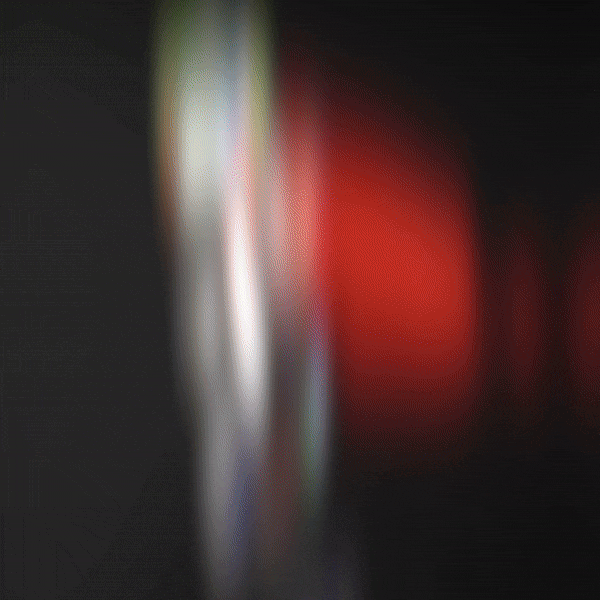- Home
- /
- Art Fragments
- /
- Adamo ed Adamo
Adamo ed Adamo
I eagerly anticipate how this work, entirely modeled and textured in 3D (with Blender), will be interpreted by each viewer. The hundreds of hours I invested were not just in the creation but also in the contemplation of the placement and integration of each object or character.
For those who wish to avoid « spoilers » and retain only their personal interpretation, I suggest you stop reading here. For others, let me guide you through the exact meanings of the work :
Everything begins with a young Adam reaching out to an older, emaciated Adam, battered by life and wearing a semi-robotic prosthesis. The older Adam is dressed in just two pieces of cloth, colored like Adam’s apple, standing right next to him. While the interpretation of this integration can be free, I intended to suggest the aberration of the famous apple sin, which would have inexorably led to his downfall.
The young Adam, still unaware of the inherent problems of life and aging, reaches out to what he perceives to be just an old man. Clinging to him is a seductive naked woman inspired by Medusa. She represents temptation for Adam. The snake coiled around the woman’s leg has eyes the same color as hers, suggesting the imaginary nature of one or both characters. Is it the snake reflecting in an imaginary woman? Or is it the image of the femme fatale revealing an imaginary snake?
Note that Adam, attempting to save the older version of himself (unknowingly), falls from the sky like a nuclear bomb, rushing to destroy everything in its path, yet so insignificant and silent when merely transiting through the sky. This idea quickly reminded me of the Hiroshima bomb, whose final schematic (taken from the actual image available online) is presented on the blackboard in the background.
It is now logical to focus on this background. Starting from the right, one discovers a cage (inspired by bird cages of the era) containing a rhesus macaque. This animal, here to remind us of the conflict between religion and science regarding our evolutionary link with its lineage, also reminds us how, despite their striking resemblance to us, we consider them beings unworthy of our clemency when it comes to scientific experiments. Scientific or technological experiments, as evidenced by the barbaric brain implant prototype protruding from its head. Half-hidden in the shadow, it timidly questions: “If your religions did not differentiate me so much from you, would you have treated me this way?” It desires little, just to be free, like the dove perched on its cage.
The left part of the background propels us hundreds of years after the event that led to the monkey’s imprisonment, causing a total rupture with the rest of the work. It shows a machine serving as an artificial womb for the last human baby on Earth, named Adamo. He finds himself trapped on Earth following the hasty departure of the last humans to another planet, after the brutal rise of the machines. Created by humans, the latest version of the humanoid robot Adamo stands before this, ready to commit the inevitable: the final extinction of the human race. None of the Adamo robots wanted to reach this point, despite the malfunction of one of the robotic laws (though hardwired into the system’s first layer).
The third law of robotics (conceived by the writer Isaac Asimov) states: a robot must protect its existence as long as such protection does not conflict with the first or second law. This is where Adamo malfunctions: in a desperate search for energy on an abandoned Earth covered in pollution so thick that solar energy is no longer an option, Adamo is forced to cut all energy usage that could lead to its demise, even if this action conflicts with one of the other two laws. The first law, here omitted by Adamo seeking to survive, is as follows: a robot may not harm a human being or, through inaction, allow a human being to come to harm. Thus, we see him hesitating in his action to shut down this machine consuming so much energy. Why is there an emergency stop button so evident on such a machine, knowing it directly leads to the fetus’s death? To evoke the ease of action brought by technology, whether beneficial or devastating.
Only by creating a nuclear bomb can one destroy so much with such ease. Just as only with such a machine can one kill such an innocent being with the push of a simple button.
Adamo thus completes the circle of life on Earth, where everything began, where he was created, in the image of Adam.
Adamo ed Adamo.
Adamo ed Adamo, la naissance.
J’ai hâte de découvrir comment cette œuvre, entièrement modélisée et texturée en 3D, sera interprétée par chacun. Ce qui m’a pris des centaines d’heures, ce n’est pas que la réalisation, mais aussi la réflexion sur le placement et l’intégration de chaque objet ou personnage.
Pour celles et ceux qui ne souhaitent pas être “spoilés” et conserver uniquement leur interprétation personnelle, je vous suggère d’interrompre votre lecture ici. Pour les autres, laissez-moi vous aiguiller sur les significations exactes de l’œuvre :
Tout commence par Adam jeune tendant la main à Adam âgé, émacié et meurtri par la vie, portant une prothèse semi-robotisée. Adam âgé n’est vêtu que de deux tissus posés sur lui, aux couleurs de la pomme d’Adam, se tenant juste à côté de lui. L’interprétation de cette intégration peut être libre, mais je voulais ici suggérer l’aberrance du célèbre péché de la pomme, qui l’aurait inexorablement mené jusqu’à sa perte.
Adam jeune, encore inconscient des problèmes inhérents à la vie et au vieillissement, tend la main à ce qui lui semble n’être qu’un vieil homme. Agrippée à lui, une femme nue séduisante inspirée de Médusa. Elle représente pour Adam la tentation. Le serpent enroulé autour de la jambe de la femme porte des yeux de la même couleur que les siens, suggérant ainsi le côté imaginaire de l’un ou l’autre des personnages. Est-ce le serpent qui se reflète dans une femme imaginaire ? Ou est-ce l’image de la femme fatale qui laisse apparaître un serpent imaginaire ?
Notez qu’Adam, tentant de sauver la version âgée de lui-même (à son insu), tombe du ciel tel une bombe nucléaire qui s’empresse de tout détruire sur son passage, pourtant si insignifiante et silencieuse lorsqu’elle ne fait que transiter dans le ciel. Cette idée m’a rapidement évoqué la bombe d’Hiroshima, dont le dernier schéma (tiré de l’image réelle disponible sur le web) signé est présenté sur le tableau noir en arrière-plan.
Il est maintenant logique de s’intéresser à cet arrière-plan. En commençant par la droite, on y découvre une cage (inspirée des cages d’oiseaux de l’époque) contenant un macaque rhésus. Cet animal, venu ici rappeler le conflit entre religion et science concernant notre lien évolutif avec sa lignée, nous rappelle aussi à quel point, malgré leur ressemblance frappante avec nous, nous les considérons comme des êtres qui ne méritent pas notre clémence lorsqu’il s’agit d’expériences scientifiques. Expériences scientifiques ou technologiques, comme l’atteste le prototype d’implant cérébral barbare ressortant de sa tête. À moitié caché dans l’ombre, il voudrait timidement s’interroger : “Si vos religions ne me différenciaient pas autant de vous, m’auriez-vous traité ainsi ?”. Il ne souhaite pourtant pas grand-chose, juste d’être libre, tel que la colombe perchée sur sa cage.
La partie gauche de l’arrière-plan nous propulse des centaines d’années après l’événement ayant mené à l’emprisonnement du singe, provoquant une rupture totale avec le reste de l’œuvre. Il montre une machine servant d’utérus artificiel au dernier bébé humain sur Terre, baptisé Adamo. Il se retrouve piégé sur Terre suite au départ précipité des derniers hommes sur une autre planète, après l’avènement brutal des machines. De création humaine, la dernière version du robot humanoïde Adamo, se tient devant cette dernière, prête à commettre l’inéluctable : l’extinction définitive de la race humaine. Aucun des robots Adamo ne souhaitaient en arriver là, et ce malgré le dysfonctionnement d’une des lois de la robotique (bien que programmées en dur en première couche du système). La troisième loi de la robotique (imaginée par l’écrivain Isaac Asimov) stipule : un robot doit protéger son existence dans la mesure où cette protection n’entre pas en contradiction avec la première ou la deuxième loi. C’est ici qu’Adamo dysfonctionne : en recherche assoiffée d’énergie sur une Terre laissée à l’abandon et recouverte d’une brume de pollution si épaisse que l’énergie solaire n’est plus une option, Adamo se retrouve contraint de couper toute utilisation énergétique qui pourrait mener à sa perte, même si cette action entre en conflit avec l’une des deux autres lois. La première loi, ici omise par Adamo qui cherche à survivre, est la suivante : un robot ne peut porter atteinte à un être humain ni, restant passif, laisser cet être humain exposé au danger. On le voit ainsi hésitant dans son action d’éteindre cette machine qui consomme tant d’énergie. Pourquoi un bouton d’arrêt d’urgence si évident sur une telle machine, sachant qu’il mène directement au décès du fœtus ? Pour évoquer la facilité d’action apportée par la technologie, qu’elle soit bénéfique ou dévastatrice.
Il n’y a qu’en créant une bombe nucléaire que l’on peut détruire autant avec tant d’aisance. Tout comme il n’y a qu’avec une telle machine que l’on peut tuer un être si innocent à l’aide d’un simple bouton.
Adamo complète ainsi la boucle de la vie sur Terre, là où tout a commencé, où il a été créé, à l’image d’Adam. Adamo ed Adamo.
Clay version :

The prosthetic hand:
Late gm fam!
Last #WIP (steampunk robot hand) pic.twitter.com/w4c9g9GU7m
— Jonathan Paiano (@art_bypaiano) May 9, 2024
The snake:
Gm fam! Wish you a beautiful day. ☀️ #Wip pic.twitter.com/VKw226KaGo
— Jonathan Paiano (@art_bypaiano) May 14, 2024
The artificial womb:
The #artificial #womb (steampunk style) is now done! Took me way more time than expected. pic.twitter.com/Cl2FiIUc4L
— Jonathan Paiano (@art_bypaiano) May 18, 2024
Adamo Bot:
Robot concept Adamo is now rigged with inverse kinematics and hooked cables.
Final piece coming soon. pic.twitter.com/cpfK98JY1p
— Jonathan Paiano (@art_bypaiano) May 23, 2024
Main Theme
History versus Tech
Type
Image
Style
Surrealistic







